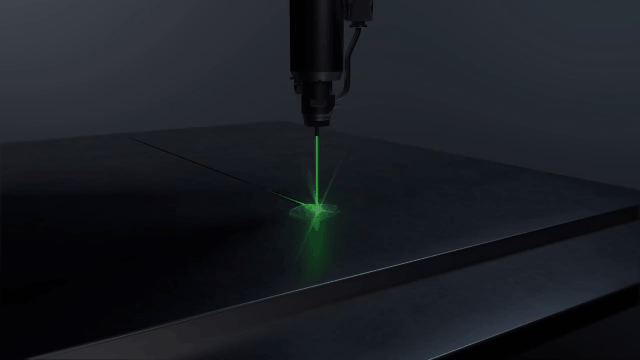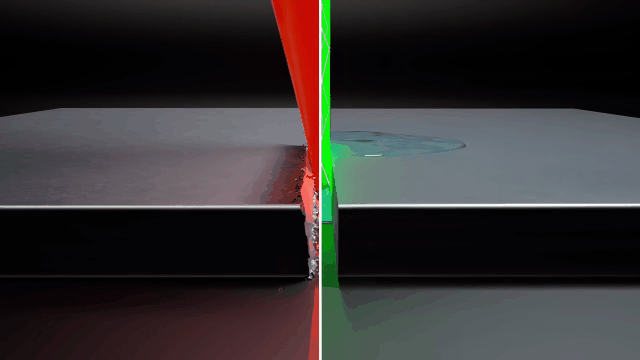If water-jet cutting and laser cutting are combined, what will it be?
Water jet cutting and laser cutting are now widely used cutting methods, facts have proved that these two methods are also the most effective cutting solutions in the industry. But people have not stopped looking for better cutting methods, for example, some precision metal parts processing, or some new materials cutting, we need to find new cutting methods, then developed a unique water knife laser cutting technology.
With the advent of new materials such as carbon fiber reinforced polymers and Ceramic matrix composite, the machining of these new materials has become a problem.

Both water knife and laser cutting have some defects. To meet this challenge, we developed water knife laser cutting technology to process this kind of advanced composite materials.
Water-jet laser cutting is a hybrid processing method, also known as laser micro-jet, which combines laser with “Thin” water jet, the water jet (water knife) can accurately guide the laser beam in the same way as the conventional optical fiber. The water knife can continuously cool the cutting area and effectively remove the debris.

When the laser is focused, it creates a laser beam that propels water forward through the pressurized water chamber and into the nozzle, where it is fired along with the current. The current is free of abrasives, so the cutting is mainly done by laser. The water’s role is to use the water column to guide the laser not to disperse, to concentrate the laser energy to cut faster and to cool and remove debris.

The distance from the nozzle to the cutting workpiece, the laser beam will not be scattered, but in the water column continuously reflected forward, the principle is similar to optical fiber transmission, the laser beam can be guided at a distance of up to 10 cm, thus achieving a neat slit, no refocusing or distance control is required.
The technology was first applied to semiconductor wafer cutting, and as the technology matured, it was gradually extended to medical equipment, watch processing, gas, and jet engine blades, machining of semiconductor equipment, and cutting of materials in the manufacture of super hard tools.
Water knife laser cutting for the processor can have faster production speed, a wider range of processing materials, higher reliability, and higher cutting quality, to achieve lower cutting costs. With the emergence of more new materials, water laser cutting all these characteristics will be more widely used.










